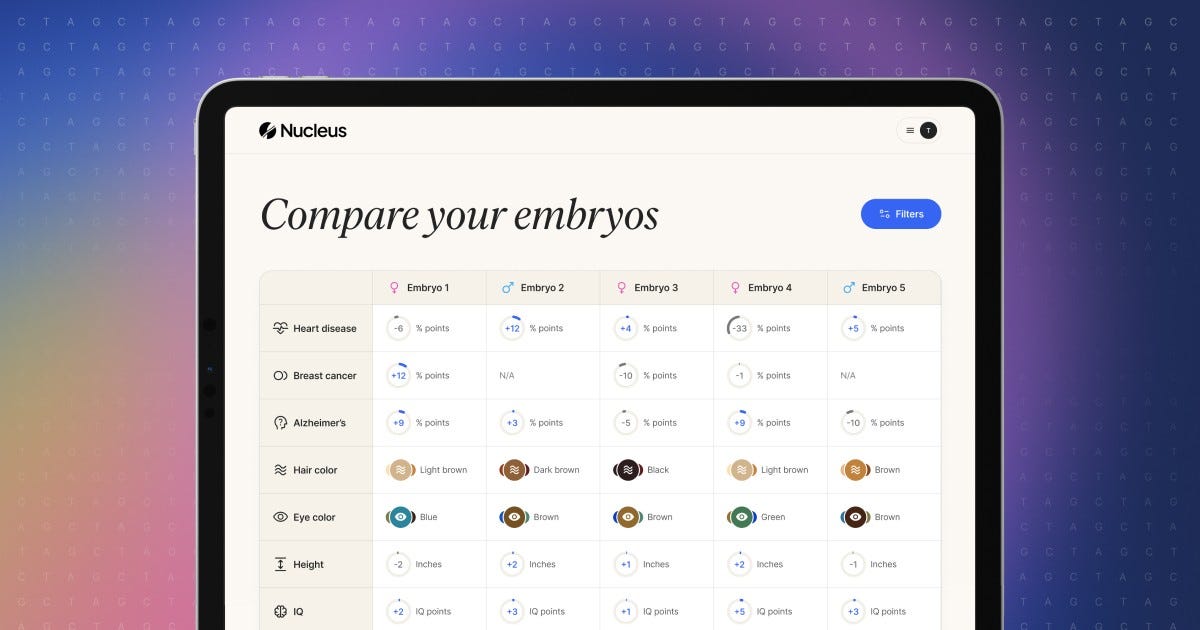>FASTA_17
Nucleus Embryo, Amplifye enzymes, Loopt's mushroom coffins, Bio-vaults prove the simulation, Vivodyne to replace animal testing, Neuralink's competitors, Antheia to combat pharma's reliance on plants
>FASTA presents weekly short reads of the biotech ecosystem | Papers and patents, acquisitions and bankruptcies, biotech philosophy as dessert | Read in under 5 min | Emails every Wednesday | LinkedIn and X all day.
We’re 1,000+ Biopunks now. Bring your friends to the dark side of biotech. Let’s become trillions. 😈
7 days, 7 news
Nucleus Genomics launched Nucleus Embryo, “the first-ever genetic optimization software” for couples using IVF. Tech-bros celebrated a new era of genomics, bio-gals worried about a eugenic slippery slope. Read til the end to get my 3 cents on the marketing, science, and philosophy.
Digestiva launched Amplifye, a consumer biotech brand commercializing P24 enzyme capsules for amplified protein absorption. The brand is being led by former CEO of the now-bankrupt Amyris. What might he be doing differently this time? I sneaked into their patents and papers to find out. Read til the end…
Loop biotech’s mushroom coffins. While Silicon Valley is trying to escape death, our Dutch friends are resignifying it. The Loop Living Cocoon™ is made out of mushroom species local to the Netherlands and upcycled hemp fibers. It’s grown in 7 days and biodegrades in 45 days — Now I am really curious to know who their user personas are… Andy, the hippie who loves shrooms and wants their souls to merge with mother nature, perhaps?
Keep reading with a 7-day free trial
Subscribe to Biopunk to keep reading this post and get 7 days of free access to the full post archives.






